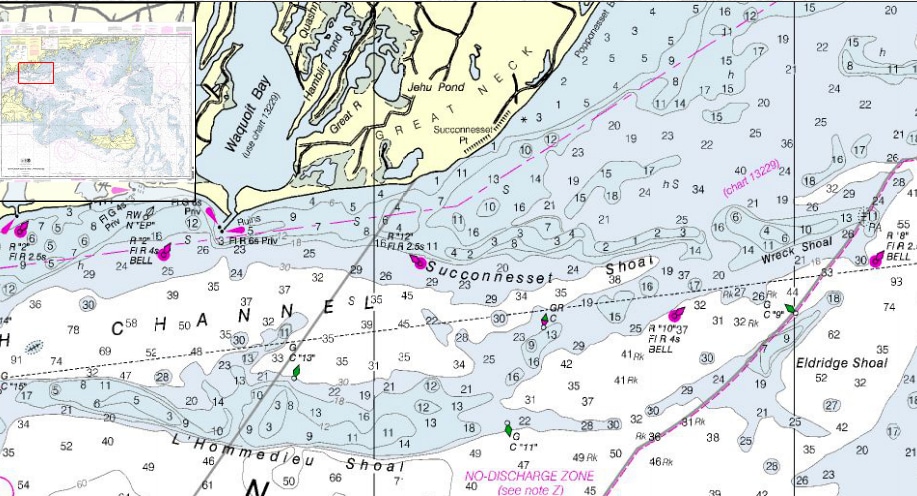Succonnesset Shoal #425

Succonnesset Shoal is located just south of Popponesset Point in Mashpee near the Falmouth Line. This area is often considered the starting point for this portion on Vineyard sound all the way to Yarmouth.as early as the 3rd week of April as the water approaches 50 degrees when the Loligo squid arrive on scene to spawn. This fishery is no secret as evidenced by large clusters of boats targeting these tasty creatures for bait, the table often the case, both! You can find your own squid by patrolling the area with your fish finder on looking for cloudy clusters in between 15 and 30 feet of water. That said, you’ll likely find it difficult to find them before the commercial fleet or the hard-core anglers that pound the area first. This is an ideal spot as it is close to shore and near many boat ramps. When the action is heavy, you can literally fill bucks in a tide. Squid will range all levels of the water column but tend to go deeper on the brightest days. Squid like moving water and the second half of the tide is considered idea.
Toward late May, Bluefish and striped bass may be anywhere in or adjacent to the rip. Your best advised to use pink, white and amber topwater lures to imitate squid that were just in the area. As the season progresses, the stripers will move on but Succenesset Shoal will hold scup, sea bass fluke and bluefish all season long, granted with the occasional striper mixed in. – look for diving birds or baitfish near the surface. False albacore and bonito later in the season. Popping plugs, metals, swimming plugs, flies recommended. If you’re casting, stay near the rips and stem the tide like you would any other rip on the southside of the Cape. Cast in to smooth water and swing the lure into the rip.Many anglers will troll small swimming plugs here for Bluefish. Troll south side of the rip from buoy “12” to buoy “6” (Wreck Shoal) in same direction as the tide, following 15 – 20 foot contour. A favorite area to bottom fish for large fluke (use cut squid). Fish depths of 15 – 30 feet on the north side of the rip.
- Lat & Long: 41°31.5’ x 70°29’
- Best Tide: Either but incoming is best in the spring and early summer. Action slows at slack.
- Hazards: Very rough conditions develop when a strong tide is in opposition to wind direction.

